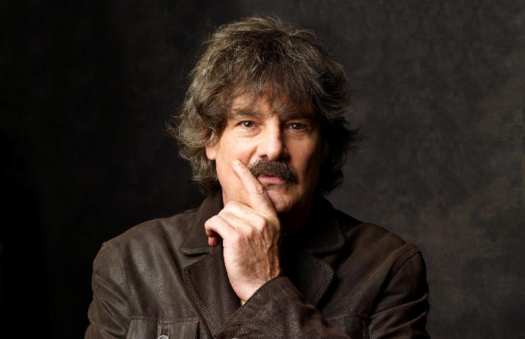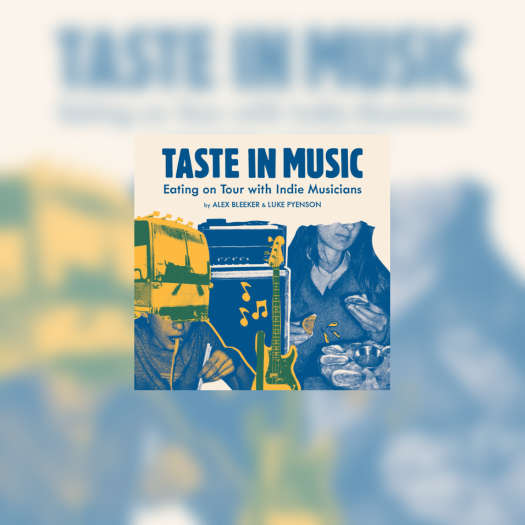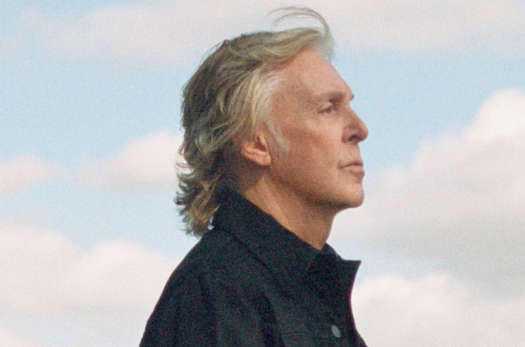Early on, music labelled "industrial" referred to a non-musical approach to its creation; pioneers such as Karlheinz Stockhausen, Klaus Shulze and David Vorhaus worked with sound to make complex audio collages. In the late 70s, seminal experimental band Throbbing Gristle began the label Industrial Records, unintentionally labelling a new sound that merged aggression with technological exploration.
Industrial
The forefathers of what we know as industrial music today. The sound is minimal, often sparse and uncomplicated, and very rhythm-oriented. The idea of "found sound" non-musical sounds come upon by accident and used in a musical fashion is popularised and the use of non-instruments becomes standard. Advances in analog technology in the 70s fuelled bands like Holland's Legendary Pink Dots and England's Throbbing Gristle, while bands such as Germany's Einsturzende Neubauten stuck to primal-sounding percussion to develop their signature sound. Artists like Canada's Skinny Puppy (see Timeline, page tk) also broke new ground by employing the use of samplers, and trade-marking what would become the classic, raw industrial vocal sound. Lyrics tend to deal, often bleakly, with issues surrounding society, environment, politics and man vs. machine.
Key sounds: Throbbing Gristle 20 Jazz Funk Greats (Industrial, 1979); Einsturzende Neubauten Strategies Against Architecture 80-'83 (Mute, 1984); Skinny Puppy VIVIsectVI (Nettwerk, 1988); Cabaret Voltaire Red Mecca (Mute, 1981); Legendary Pink Dots Asylum (Play It Again Sam, 1985)

Legendary Pink Dots
Industrial-Metal
The abrasive texture of industrial vocals and percussion merges naturally with aggressive metal samplers, synthesisers, sequencers and tape loops, are combined with a traditional rock approach using heavy guitars. By the late 80s, the fusion of European speed/thrash metal with electronic elements gave two formerly disconnected subcultures shared space on the dance floor. Mid-career Ministry saw lead singer Al Jourgensen grow his once clean-cut new wave crop into long, unruly dreads to match the band's newer, more aggressive sound. Into the 90s, bands like America's Fear Factory and Germany's Rammstein update the harder edge with an even greater use of electronics.
Key sounds: Ministry Psalm 69:The Way to Succeed and the Way to Suck Eggs (Sire, 1992); Rammstein Sehnsucht (Polygram, 1998); Fear Factory Obsolete (Roadrunner, 1998); Filter Short Bus (Reprise, 1995); Godflesh Pure (Earache, 1992)

Ministry
Industrial EBM
Defined as "electronic body music," industrial music of this variety makes you want to hit the dance floor like none other. With the addition of repetitive dance beats and catchy hooks, these tunes became more of the mainstream crowd-pleasers, especially in the club circuit. The sound is cleaner, more synth-laden than its heavier and more experimental cousins, and is often purely electronic. Its sound is more accessible, and by the late 80s and early 90s, bands like England's Nitzer Ebb and Canada's Frontline Assembly helped create a genre that still thrives. Labels like the late Wax Trax out of Chicago and Philadelphia's Metropolis are home to many of the projects in this family, the latter being the most active.
Key sounds: Front 242 Front by Front (Epic, 1988); Covenant United States of Mind (Metropolis, 2000); Frontline Assembly Tactical Neural Implant (Third Mind, 1992); Nitzer Ebb Belief (Geffen, 1989)

Frontline Assembly
Neo-Industrial
This large umbrella loosely covers everything from hard electronic to newer, postmodern experimental noise. Many bands and artists that are traditionally considered "industrial" are releasing projects that fall under this category, but with a sound that is more progressive, more forward-thinking than before. Industrial music continues to innovate by adapting its past with a forward-looking approach to new sounds.
Key sounds: OhGr Welt (Spitfire Records, 2001); Lustmord Metavoid (Nextera, 2001); Merzbow Music for Bondage Performance (Extreme, 1995)

OhGr
Industrial
The forefathers of what we know as industrial music today. The sound is minimal, often sparse and uncomplicated, and very rhythm-oriented. The idea of "found sound" non-musical sounds come upon by accident and used in a musical fashion is popularised and the use of non-instruments becomes standard. Advances in analog technology in the 70s fuelled bands like Holland's Legendary Pink Dots and England's Throbbing Gristle, while bands such as Germany's Einsturzende Neubauten stuck to primal-sounding percussion to develop their signature sound. Artists like Canada's Skinny Puppy (see Timeline, page tk) also broke new ground by employing the use of samplers, and trade-marking what would become the classic, raw industrial vocal sound. Lyrics tend to deal, often bleakly, with issues surrounding society, environment, politics and man vs. machine.
Key sounds: Throbbing Gristle 20 Jazz Funk Greats (Industrial, 1979); Einsturzende Neubauten Strategies Against Architecture 80-'83 (Mute, 1984); Skinny Puppy VIVIsectVI (Nettwerk, 1988); Cabaret Voltaire Red Mecca (Mute, 1981); Legendary Pink Dots Asylum (Play It Again Sam, 1985)

Legendary Pink Dots
Industrial-Metal
The abrasive texture of industrial vocals and percussion merges naturally with aggressive metal samplers, synthesisers, sequencers and tape loops, are combined with a traditional rock approach using heavy guitars. By the late 80s, the fusion of European speed/thrash metal with electronic elements gave two formerly disconnected subcultures shared space on the dance floor. Mid-career Ministry saw lead singer Al Jourgensen grow his once clean-cut new wave crop into long, unruly dreads to match the band's newer, more aggressive sound. Into the 90s, bands like America's Fear Factory and Germany's Rammstein update the harder edge with an even greater use of electronics.
Key sounds: Ministry Psalm 69:The Way to Succeed and the Way to Suck Eggs (Sire, 1992); Rammstein Sehnsucht (Polygram, 1998); Fear Factory Obsolete (Roadrunner, 1998); Filter Short Bus (Reprise, 1995); Godflesh Pure (Earache, 1992)

Ministry
Industrial EBM
Defined as "electronic body music," industrial music of this variety makes you want to hit the dance floor like none other. With the addition of repetitive dance beats and catchy hooks, these tunes became more of the mainstream crowd-pleasers, especially in the club circuit. The sound is cleaner, more synth-laden than its heavier and more experimental cousins, and is often purely electronic. Its sound is more accessible, and by the late 80s and early 90s, bands like England's Nitzer Ebb and Canada's Frontline Assembly helped create a genre that still thrives. Labels like the late Wax Trax out of Chicago and Philadelphia's Metropolis are home to many of the projects in this family, the latter being the most active.
Key sounds: Front 242 Front by Front (Epic, 1988); Covenant United States of Mind (Metropolis, 2000); Frontline Assembly Tactical Neural Implant (Third Mind, 1992); Nitzer Ebb Belief (Geffen, 1989)

Frontline Assembly
Neo-Industrial
This large umbrella loosely covers everything from hard electronic to newer, postmodern experimental noise. Many bands and artists that are traditionally considered "industrial" are releasing projects that fall under this category, but with a sound that is more progressive, more forward-thinking than before. Industrial music continues to innovate by adapting its past with a forward-looking approach to new sounds.
Key sounds: OhGr Welt (Spitfire Records, 2001); Lustmord Metavoid (Nextera, 2001); Merzbow Music for Bondage Performance (Extreme, 1995)

OhGr




